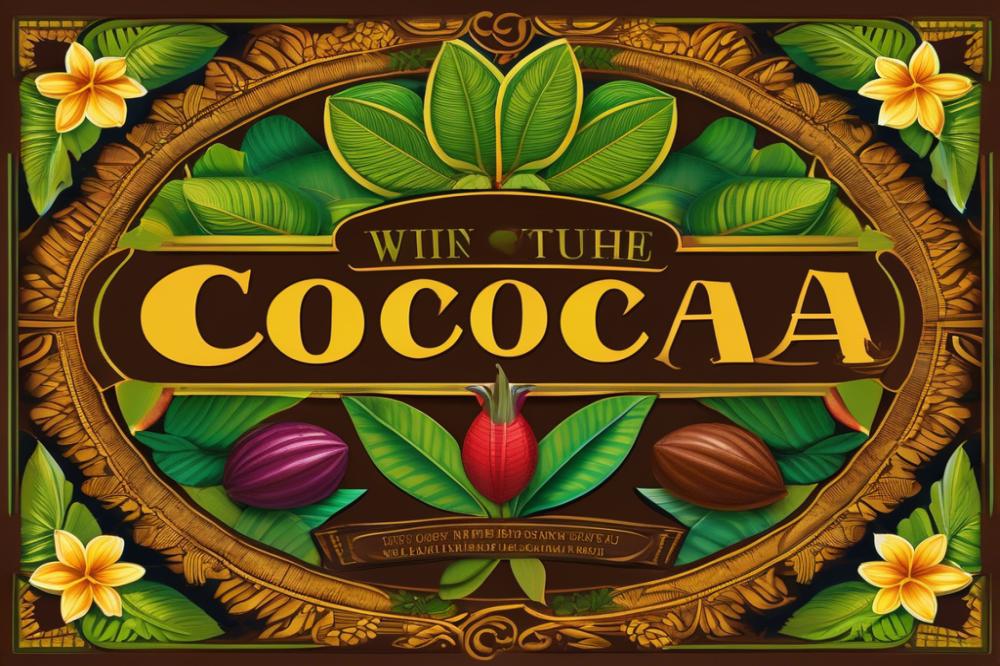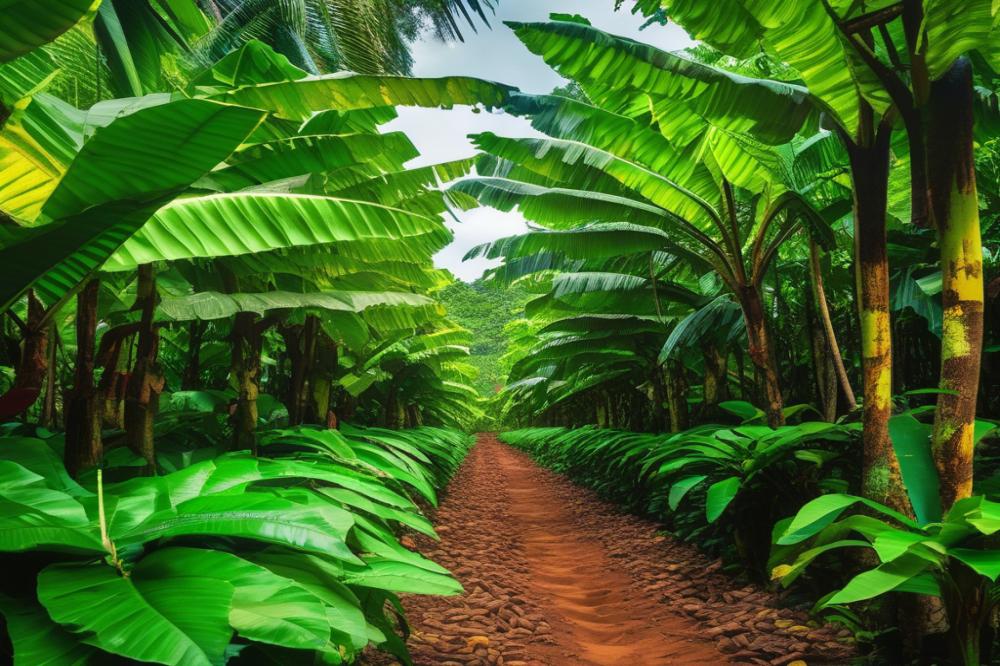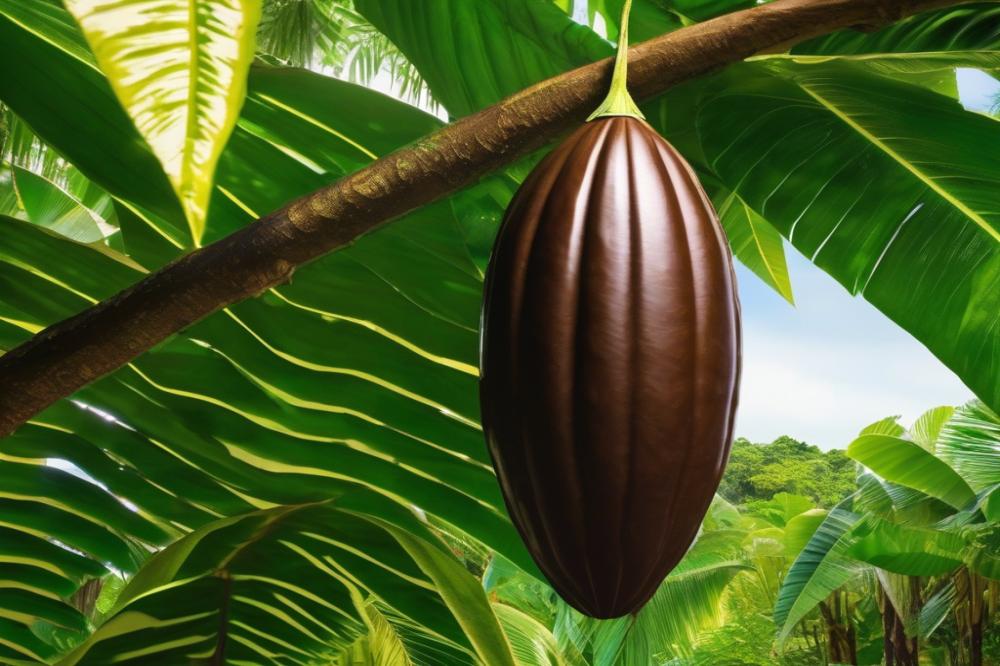Understanding the World of Cocoa
Cocoa holds a special place in the chocolatebix.com/cocoa-in-cosmetics-skin-care-benefits-and-diy-recipes”>chocolate production industry. Without it, the delightful treats many people love would not exist. cocoa beans, which are the seeds of the cacao tree, are the key ingredient. These beans undergo a detailed journey from farm to factory before becoming the chocolate bars and sweets enjoyed around the globe.
The journey of cocoa begins on vast cocoa plantations, primarily found in tropical regions. Harvesting these beans is a labor-intensive process. Workers carefully cut ripe pods from cacao trees with machetes. This must be done with skill to avoid damaging the tree, which takes years to bear fruit. Once the pods are harvested, the beans are extracted and then prepared for fermentation, an essential step in enhancing their flavor.
A few days later, the beans undergo drying. This process reduces moisture and prevents spoilage. After drying, the magic continues with roasting. Roasting brings out the rich aromas and flavors in the beans. Each farmer may have a unique roasting technique, affecting the final taste of the chocolate.
Next comes grinding, where the roasted beans are crushed into a paste. This paste, known as chocolate liquor, can be separated into two components: cocoa butter and cocoa powder. Cocoa butter is used in creamy chocolates, while cocoa powder is the key to a rich flavor in many products. The whole process reflects a delicate balance between art and science.
In recent years, the emphasis has shifted towards sustainable farming practices in cocoa production. Many farmers are now adopting methods that protect the environment and benefit local communities. Fair trade initiatives seek to support cocoa farmers by providing fair wages and promoting better working conditions. This shift is vital not just for the farmers but for the future of cocoa itself.
Ultimately, understanding Cocoa Harvesting and processing helps appreciate the chocolate we enjoy. As consumers, making informed choices can drive demand for sustainable practices in this beloved industry. By valuing ethical cocoa, everyone can contribute to a system that benefits both people and the planet.
Cocoa Harvesting
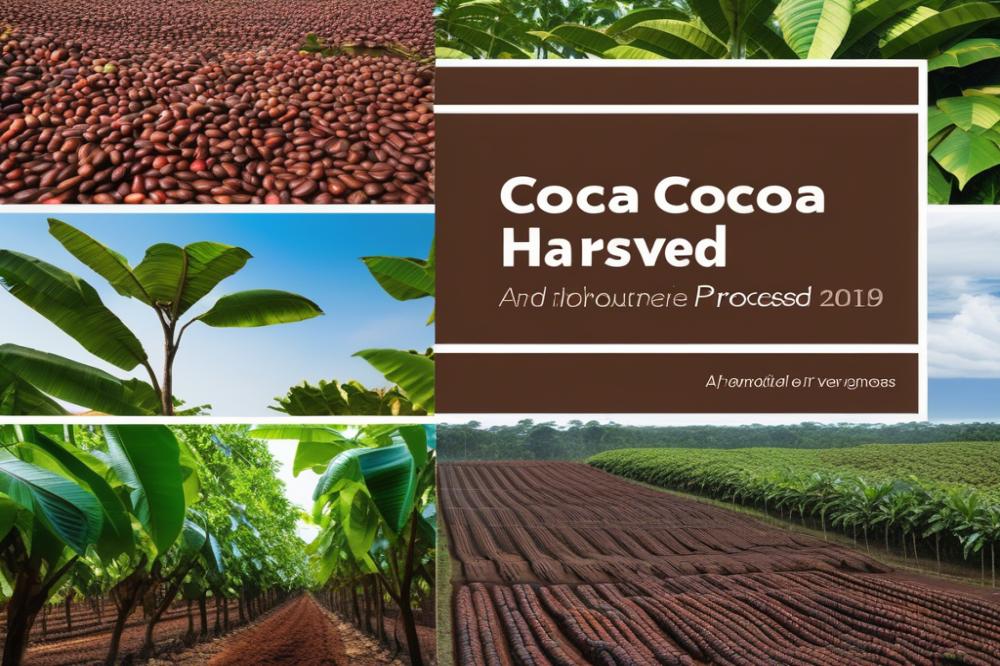
The harvesting process for cocoa is fascinating and labor-intensive. Cocoa trees typically bear fruit all year, but certain seasons see a peak in ripe pod availability. Farmers monitor their plantations closely to determine the best time to pick. Each cocoa pod takes around five to six months to mature after flowering. When the pods show signs of ripeness, it’s time for harvesting.
Special tools aid in the collection of cocoa pods. Farmers usually use a machete or a curved knife, known as a “sickle,” to cut the pods from the tree. Often, it’s necessary to use a long pole with a blade at the end to reach the higher pods. Safety is critical during this process since climbing trees can be dangerous. Proper equipment helps workers gather the pods effectively while minimizing risks.
Local communities play an essential role in cocoa plantations. Family members often work together, sharing the labor. Adults and older children in these communities learn the techniques of cocoa harvesting from their elders. This transfer of knowledge helps maintain traditions and ensures efficient practices are followed. Farmers deeply understand the land, which benefits the entire cocoa production cycle.
The seasonal cycles of cocoa harvesting are significant for producers. In West Africa, the main harvesting season occurs from October to March. Conversely, other regions like Ecuador have different timings. The staggered harvests allow chocolate producers to access beans throughout the year. After harvesting, the pods are split open, and the valuable cocoa beans are extracted. Following this, fermentation and drying are crucial steps before shipping the beans around the globe.
The journey of cocoa doesn’t end at the farm. After drying, the beans undergo roasting, which enhances their rich flavor. Grinding then transforms them into a liquid form, paving the way for chocolate production. This process also produces cocoa butter, a vital ingredient in many confections. It’s important to note that sustainable farming practices are increasingly vital in supporting cocoa communities. Promoting fair trade benefits both producers and consumers alike, fostering a more equitable global trade.
From Cocoa Beans to Chocolate: The Processing Steps
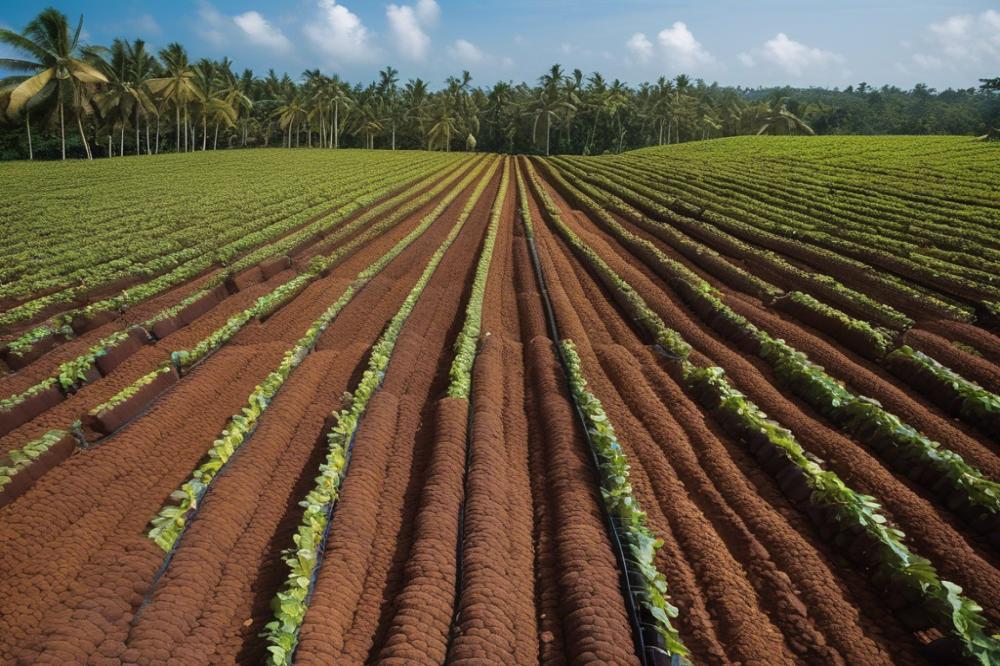
Fermentation
Fermentation is a crucial step in transforming cocoa beans into chocolate. This process not only influences flavor but also affects the overall quality of the chocolate produced. During fermentation, natural yeasts and bacteria work their magic on the wet beans. The result is a complex array of flavors forming within the beans.
Now, let’s discuss fermentation techniques. Traditional methods often involve wrapping cocoa beans in banana leaves and letting them sit in piles. This age-old practice is still seen in many cocoa plantations. In contrast, modern techniques may use controlled environments for fermentation, promoting consistency in flavor development. Both approaches have their merits.
Drying
Next comes drying. This stage is vital as it reduces moisture content and prevents spoilage. Sun drying is a common method in cocoa-growing regions. Farmers spread the beans out under the sun for several days. However, mechanical dryers are increasingly used to speed up the process.
The method of drying has a significant impact on quality and flavor. Properly dried beans develop a rich taste, while inadequate drying can lead to off-flavors. Sustainable farming practices often emphasize these methods, aiming for better quality cocoa that meets global trade standards.
Roasting
Roasting is another key step in chocolate production. The temperature and time during this stage are critical. Beans are typically roasted at temperatures ranging from 250°F to 350°F for varying durations. This step brings out the deep, chocolatey flavors we all love.
The impact of roasting on chocolate is profound. It can enhance or diminish the cocoa notes, changing the final product. Different roasters may prefer various techniques based on the desired chocolate profile. This diversity in methods reflects the art and science behind making quality chocolate.
Grinding
Grinding comes after roasting. It transforms cocoa beans into cocoa mass, which is essential for chocolate. In this process, mechanical grinders crush the beans, separating cocoa butter from cocoa solids. This step is crucial for achieving the right texture.
During grinding, the temperature rises, causing the cocoa butter to melt and combine with the solids. The final mixture can be further processed into different forms, like cocoa powder or chocolate liquor. The ability to extract cocoa butter assists manufacturers in creating a smooth and velvety product that consumers adore.
Sustainable Cocoa Farming Practices
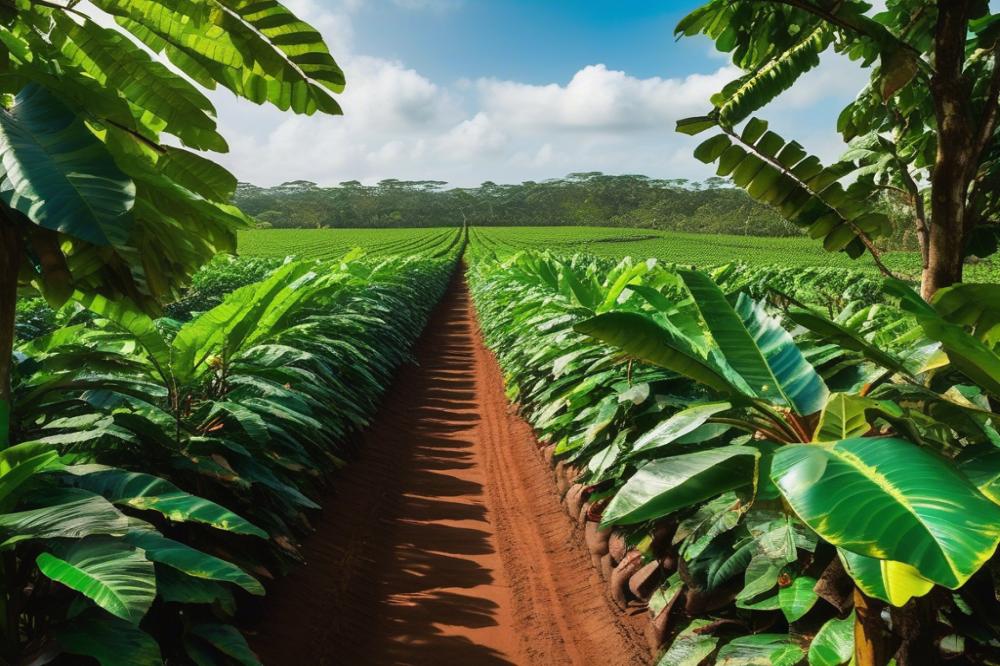
Sustainable farming techniques are crucial for improving the overall health of cocoa plantations. Farmers use methods like agroforestry to grow cocoa alongside other trees. This technique promotes biodiversity. It also helps to protect the soil from erosion. Healthy soils lead to better cocoa bean quality. Less reliance on chemical fertilizers enhances the natural environment. Furthermore, reducing pesticides maintains the ecosystem balance.
Quality is vital in chocolate production. Sustainable practices can boost this quality significantly. By focusing on organic methods, farmers can develop richer flavors in the cocoa beans. When farmers prioritize nature, they often notice that their cocoa is more aromatic and delicious. Fermentation plays a key role too. Proper fermentation enhances the taste and scent of cocoa, leading to better market prices.
There are social implications for communities that rely on cocoa farming. Sustainable methods can improve the livelihoods of farmers and their families. These practices often lead to fair wages and better working conditions. Communities thrive when they adopt responsible farming. Investment in education and healthcare improves quality of life. It is essential that cocoa farmers feel empowered in their work.
Various certifications exist to promote sustainable cocoa farming. Rainforest Alliance and Fair Trade are examples of programs that benefit both farmers and consumers. These certifications signal to buyers that the cocoa was grown responsibly. They can enhance the value of cocoa beans in global trade. Consumers are increasingly interested in sourcing ethically produced chocolate. When they see these labels, they are more likely to choose products that support sustainable practices.
The Global Trade of Cocoa
Major Cocoa-Producing Countries and Their Contributions
Some countries are vital players in producing cocoa. Ivory Coast leads the world in cocoa bean output, contributing about 40% of the global supply. Ghana follows closely, known for its high-quality cocoa. The country accounts for roughly 20% of the total production. Other notable producers include Indonesia and Ecuador. Their cocoa plantations help satisfy worldwide demand for chocolate production. Each region adds its unique flavor to the beans, which impacts the final chocolate products.
The Economic Impact of Cocoa Harvesting on Local Economies
Cocoa farming significantly boosts local economies. In many producing countries, communities depend on cocoa for income. Farmers often face challenges, such as fluctuating prices. Despite these hurdles, cocoa still provides jobs and supports families. The trade stimulates growth in rural areas. It’s more than just economic activity; it secures livelihoods and strengthens communities. Healthy cocoa trade can uplift entire regions, making it essential.
Challenges Faced in the Global Cocoa Market
Several issues challenge the cocoa market today. Child labor remains a serious concern, particularly in West Africa. Farmers often struggle with low wages, affecting their living standards. Climate change adds another layer of complexity, threatening crop yields. The sustainability of cocoa plantations is at risk. Additionally, pest infestations can destroy crops, leading to a decrease in available cocoa beans. Addressing these challenges is crucial for the future of the cocoa industry.
Trends in Cocoa Consumption and Ethical Sourcing
Consumer preferences are shifting toward ethical sourcing. Increasingly, people want to know where their chocolate comes from. Many choose brands that support sustainable farming practices. Fermentation, drying, and roasting are essential steps in processing cocoa. These processes must be done carefully to maintain quality. Grinding the beans is the final step that creates cocoa butter and powder. As awareness grows, more companies are focusing on transparency. This trend benefits both the environment and farmers, ensuring a richer, more sustainable future for cocoa.
Final Thoughts on the Cocoa Journey
The journey of harvesting and processing cocoa shows how labor-intensive and vital this crop is. From the lush farms to the delicate care during fermentation, each step matters. Farmers, often in remote areas, work tirelessly to cultivate cocoa beans, which are essential for the chocolate we enjoy. They rely on traditional practices that have been passed down through generations, ensuring that the quality of the beans is maintained.
Looking ahead, the future of chocolate production depends on several factors. Environmental changes threaten cocoa farms, making it essential to adapt. Innovations in farming techniques and climate-resilient crops could lead to a more stable supply. Also, consumer demand is shifting toward ethical sourcing. People are increasingly aware of the impacts their choices have. Supporting fair trade practices will be crucial for a sustainable future.
The significance of sustainable practices cannot be underestimated. Protecting the environment while supporting farmers is a balance that must be achieved. Through responsible farming, not only do we help the land, but we also uplift communities. These actions will ensure that the cocoa industry thrives while making a difference in people’s lives. With concerted effort, the future of cocoa and chocolate can be bright and bountiful, benefiting everyone involved in its journey.

